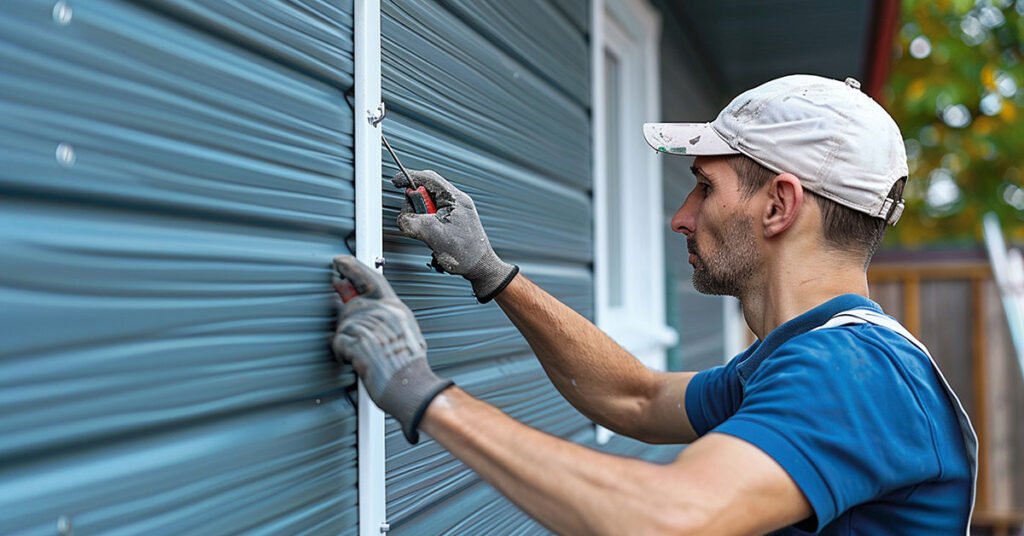
Why Garage Door Emergencies Can’t Wait: Expert Tips for Quick Solutions
Table of Contents
ToggleWhat Makes a Garage Door an Emergency?
Garage door issues can quickly escalate into emergencies when they threaten safety, security, or daily routines. A stuck door—whether open or closed—can prevent access to vehicles, trap people inside or outside, and expose the home to potential intruders. Problems like broken springs snapped cables, or a door that’s come off its tracks are inconvenient and dangerous if left unaddressed. Sometimes, the door may slam shut unexpectedly or fail to respond to controls, putting people and property at risk. Because garage doors are heavy and operate under tension, attempting DIY fixes can worsen the situation or lead to injury, underscoring the urgency of professional help.
Timely intervention is critical when a malfunction disrupts access or raises safety concerns. That’s why services like emergency garage door service San Antonio exist—to offer rapid solutions when problems can’t wait. Whether it’s a residential home or a commercial space, the need for immediate repair remains the same: restore function, protect assets, and ensure safe operation. Emergency service providers are equipped to handle urgent maintenance anytime, especially outside regular business hours when breakdowns often occur. For homeowners everywhere, knowing when a garage door issue qualifies as an emergency—and acting quickly—can prevent larger, more costly problems and keep daily life running smoothly.
Signs You Shouldn’t Ignore
Garage door emergencies rarely happen without warning. Often, there are subtle signals beforehand that something isn’t quite right. You may notice grinding or squealing sounds when opening or closing the door, or the door might jolt and hesitate mid-operation. Sometimes, the wall button works, but the remote doesn’t respond, or you see panels sagging unevenly—a telltale sign of underlying damage. There’s also the risk of visible deterioration, like frayed cables, loose springs, or unexplained gaps in the door.
These warning signs should never be brushed aside. Injuries are usually the result of ignored maintenance or delayed repairs. A garage door doesn’t typically fix itself—when minor problems are left unchecked, they often escalate rapidly into emergencies that can put people at real risk or damage property. Homeowners who pay attention to these red flags and act promptly are far less likely to face a crisis when the door finally gives out.
Quick Steps to Take Before Help Arrives
Amid a garage door malfunction, prioritizing safety while preventing further damage is the best approach. Start by refraining from any attempts to operate the door—additional force can worsen an existing problem, especially with damaged springs, cables, or openers. Ensure the area around the door is clear of children, pets, and vehicles. Treating a malfunction, like any electrical or mechanical hazard, with caution and respect for what could go wrong is best.
- Discontinue Use: Don’t force the door open or closed, either manually or with the opener. This could stress the entire system and result in a bigger, more expensive repair.
- Clear the Area: Remove any objects, such as bikes, toys, or tools, that might be near the door or obstruct emergency repair technicians when they arrive.
- Secure belongings: In rare cases, you may need access to your car or stored valuables. Be sure to retrieve only what’s necessary while avoiding unnecessary risks.
- Use Emergency Release: Most garage doors have an emergency release cord. If the door is stuck closed and safe, disengage the opener to lift it manually, but only if it moves freely and doesn’t place you in danger.
- Wait for the Pros: Remember, springs and cables are under high tension and can snap unexpectedly. It’s always best to leave the technical fix to experienced professionals.
These steps may seem simple, but they’re vital for minimizing risk and ensuring repairs can begin efficiently when help arrives.
Choosing the Right Emergency Service
Not all garage door service providers are prepared to handle true emergencies. Inexperienced or slow-to-respond technicians can cause delays that result in more stress or even security breaches. To ensure you get the best, look for services with verified 24/7 on-call teams, precise response time estimates, and robust customer reviews. Transparency in pricing is another essential—nobody wants to be hit with surprise fees once the job is done.
- 24/7 availability, so you’re never left with a security gap overnight or through the weekend.
- Certified and background-checked technicians, who help ensure the work is safe and reliable.
- Clear, up-front pricing and service guarantees protect you from hidden costs or shoddy artistry.
- It can repair any brand or style of garage door, removing the risk that a technician will arrive unprepared.
Prioritizing these features ensures that your emergency gets the professional attention it deserves, with solutions built to last.
Common Repairs Done in an Emergency
Garage doors can fail in many ways, but a few culprits stand out regarding urgent service calls. Broken or stretched-out torsion and extension springs are among the most frequent issues, as these components bear the brunt of each open and close cycle. Snapped or wound-up cables can leave doors hanging precariously or stuck entirely. Doors that have slid off their tracks, usually after an impact or extended wear, pose an immediate hazard.
- Broken torsion or extension springs, often accompanied by a loud bang and a door that won’t move.
- Snapped or jammed cables may cause one side of the door to droop or render it completely inoperable.
- Off-track or misaligned doors that make grinding noises and risk further structural damage if operated.
- Malfunctioning openers, sensors, or remotes prevent routine access and potentially stranding vehicles inside or out.
- Poorly lubricated or jammed rollers and tracks cause extra strain on the door and opener.
- Permanently bent panels, often from a collision or high wind, prevent the door from sealing or moving.
Each of these malfunctions carries its own risks and repair challenges, which is why having access to a specialized emergency team is so beneficial. Quick, correct repairs not only restore function but also help prevent related accidents or further damage.
Preventing Future Emergencies
Regular maintenance is the most effective way to keep your garage door running reliably and prevent unexpected emergencies. Just as you schedule oil changes or inspections for your vehicle, periodic tune-ups for your garage door help spot hidden problems before they escalate. Lubrication keeps metal parts moving smoothly, periodic tightening stops hardware from working loose over time, and safety checks of auto-reverse mechanisms ensure the system reacts to obstacles as designed.
- Book professional inspections at least once a year—even more frequently if your garage is used daily or exposed to harsh weather.
- Apply lubricant to all moving parts, including hinges, springs, rollers, and tracks, to stave off premature wear and grinding.
- Listen to your door. Any new or worsening noise indicates that a part is worn, misaligned, or coming loose.
- Regularly test safety sensors and auto-reverse features using a simple wood block or similar object.
- Maintain a clear area around the tracks and door path, and replace remote batteries so you’re never caught with a non-responsive opener.
Attending to these details prolongs the life of your door, reduces repair costs over time, and offers the peace of mind that comes from a truly secure home.
Safety-First Tips for Homeowners
- Educate all family members, including older children, on properly using garage door controls and emergency release mechanisms.
- Prevent kids from playing with remotes or running beneath a moving door.
- Test the auto-reverse system by placing an object in the door’s path. Upon contact, it should stop and reverse.
- Keep the area near the garage entrance clear of clutter, tools, and vehicles, which can impede safe emergency repairs.
- Step away and call the pros before someone gets hurt if you sense a problem, such as irregular movement or an unresponsive opener.
Taking precautions and ensuring everyone in the household follows safety protocol can dramatically reduce the risk of injury and property loss.
Garage Door Emergencies: What Statistics Show
Statistical data highlight how many people are affected by garage door emergencies yearly. More than 30,000 injuries related to garage doors are reported in the United States annually, according to safety organizations. These incidents often involve fingers caught in moving parts, falls from ladders during DIY attempts, and physical injuries resulting from snapped springs or falling doors. The National Fire Protection Association also warns that failing doors can impede escape during emergencies or allow for unauthorized access if stuck partially open.
The importance of being aware and proactive. Most accidents and burglaries connected to malfunctioning garage doors could have been prevented with faster, professional intervention and regular check-ups. It’s a compelling case for prioritizing your door’s condition before an emergency hits.
When to Call a Professional
Regarding garage doors, it’s best to take a cautious approach. If your door won’t open, closes with a loud bang, sags to one side, or suddenly refuses to respond, it’s time to call for professional help. Especially when broken springs, cables, or consistent system malfunctions are involved, DIY attempts aren’t just risky—they can be outright dangerous because of the high tension and weight involved. Don’t gamble with your safety or property.
Choosing a team specializing in emergency garage door service ensures the job is done quickly. Skilled technicians bring the experience, equipment, and parts needed to restore access and protect your home from further threats, letting you get life back on track safely and efficiently.

Michelle Joe is a blogger by choice. She loves to discover the world around her. She likes to share her discoveries, experiences, and express herself through her blogs.






